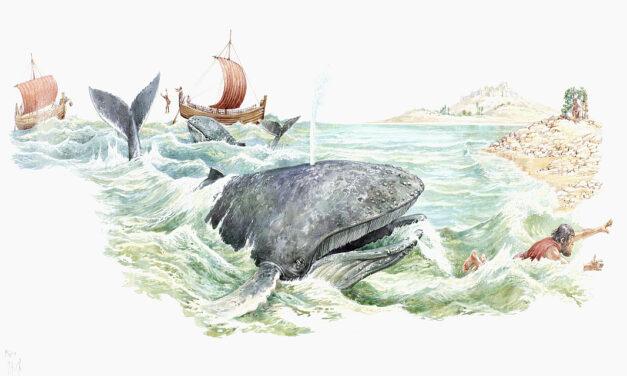This article first appeared in the CHRISTIAN RESEARCH JOURNAL, volume 37, number 01 (2014). The full text of this article in PDF format can be obtained by clicking here. For further information or to subscribe to the CHRISTIAN RESEARCH JOURNAL go to: http://www.equip.org/christian-research-journal/
Reza Aslan‘s bestseller Zealot: The Life and Times of Jesus of Nazareth recently has brought public attention, even fervor, to scholarly circles concerned with the historical Jesus. Conservatives and evangelicals also have become interested partly due to a controversial FOX News interview of Aslan in late July 2013. Aslan is from an Iranian Muslim family, and he accepted Jesus into his heart as a teen but discarded Christianity as a college student. He explicitly rejected the infallible Scripture view he had learned, saying it was “patently and irrefutably false” (p. xviii–xix), and has now thoroughly embraced Islam (xix). His book reflects the rejection, if not disgust, he now holds toward his former evangelical views. For example, he now considers many Gospel teachings “blatant errors” (242), “embellishments” (154), or “complete fabrications” (120), including the familiar idea that Jesus was a “peacemaker who ‘loved his enemies’ and ‘turned the other cheek’” (120).1 Such provocative assertions make it clear that Aslan is quite capable of generating controversy without any misguided prompting by FOX!
Aslan‘s Zealot has been billed as a “fresh perspective on one of the greatest stories ever told” (hard copy dust cover), but it is really a rehash of mostly discredited theories of earlier critics, such as S. G. F. Brandon.2 The main thesis of Brandon as reprised by Aslan is that the Jesus of history was a Jewish revolutionary seeking to liberate Israel from Roman rule. Unfortunately, Aslan tries to prove this thesis by citing snippets of New Testament material and other sources while ignoring or rejecting texts that do not fit his views. In other words, he cherry-picks. Furthermore, the lengthy “Notes” section at the end of Zealot follows a similar procedure with scholarly works. Most do not support his general reconstruction, although they may agree on nonessential details. In other words, his main arguments do not reflect a scholarly consensus, and are likely to remain a fringe view.3 Perhaps Aslan doesn‘t care, as Zealot is aimed at a popular audience rather than discipline experts. However, throughout Zealot, he insists that his years of study and expertise on the Bible should convince readers that his synthesis is undoubtedly true (e.g., xix–xx). But despite the fine prose that reads like a historical novel in places, the book is far from compelling.
Zealot ‘s Main Contentions. Aslan begins by describing Jesus as an unremarkable, illiterate peasant (“day laborer”) who was born and raised in backwater Nazareth in first-century Palestine (25–26, 34–35, 89, etc.). However, after learning from John the Baptist (who was Jesus’ “master,” according to Aslan, 80–89, 98, 118, etc.), Jesus began to promote Jewish nationalism, as many other Jews also had done in His era. Aslan believes Jesus’ zealotry primarily involved passion for the temple, promotion of Mosaic law, and a push for political liberation from the Romans. But when Jesus’ violent overthrow of the money changers and merchants in the temple brought too much attention from authorities, He was arrested and summarily crucified for sedition. Thus, Jesus “failed” (144, 170), since the regime change He preached about (i.e., the kingdom of heaven sayings as interpreted by Aslan, 115–26), did not materialize. Finally, Aslan believes that Paul was almost solely responsible for transforming the failed zealot Jesus (who did not Himself ever claim to be God) into a divine Christ who would rule a future universal kingdom (183–96).
Poor Methodology and False Assumptions. In the course of this presentation, Aslan presumes that Mark, Matthew, and John did not write the books that bear their names (Luke might be an exception), and he accepts late dates for their composition: Mark after AD 70, Matthew and Luke c. 90–100, and John c. 100–120 (xxvi–xxvii).4 These higher critical assumptions feed into Aslan‘s view that the Gospels seldom present reliable history. But he still attempts to find valid portions to advance his contentions. For example, he has no doubt Matthew 10:34 was really said by Jesus—it is his headline text: “Do not think that I have come to bring peace on earth. I have not come to bring peace but a sword” (ix, 120). But the context of this saying (not analyzed in Zealot) involves divisions that will come to families because of Jesus’ teaching. It advocates nothing about political rebellion, according to nearly all commentators.5
Aslan also uses “Q,” which he dates to c. AD 50 to help sift out historical truth behind the presumed Gospel embellishments (xxvii, 29, 111, 136). But Q is itself a purely hypothetical collection of sayings of Jesus that modern scholars attempt to derive out of the extant sources, primarily sayings common to Matthew and Luke. It doesn‘t exist as a distinct text, and no two New Testament scholars agree exactly on what may have been in it! Thus, Q is not really an objective source, since its presumed original content can depend on the assumptions of the scholar trying to identify it.
Nevertheless, armed with late dates, critical assumptions, and Q, Aslan contends that nearly everything that does not fit his idiosyncratic views was not originally true of Jesus. Even what seem like straightforward historical details in the Gospel narratives about the birth of Jesus (e.g., Herod the Great being alive when Jesus was born) are rejected (24, 30–34). Why? Because the birth narratives are not in Mark (or Q), and Aslan sees historical errors in them, primarily in the census details and links with Quirinius (Luke 2:2) when compared with information in Josephus. But even for higher critics, this is like throwing the baby out with the bathwater. Few scholars of any stripe think Jesus was born after Herod died. More important for evangelicals, there are credible explanations for the census/Quirinius difficulties that Aslan does not cover.6
Indeed, Aslan’s treatment of the Gospel birth narratives, which he calls “preposterous” (34), also illustrate another weakness seen throughout Zealot: Aslan employs a double standard by accepting extrabiblical material as more reliable than the New Testament, even when those sources are themselves late or inaccurate. For example, he quotes the pagan critic of Christianity Celsus (from c. AD 150), whose views are known only from second-hand paraphrases provided by the church father Origen (around AD 250), to prove that wild apocalyptic and Messianic declarations were commonly made by first-century Jews (xxiii). Aslan also uses Celsus to argue that the Gospel virgin birth teachings were invented to mask the truth that Jesus was born out of wedlock because Celsus hints at a story that Jesus was illegitimate—that His father was a Roman soldier named Panthera (36–37). Aslan’s highly critical analysis used to weed out supposedly spurious Gospel material is not applied to this dubious and late Celsus material.
Historical Errors, Contradictions. Furthermore, Zealot itself has both major and minor errors and contradictions, a virtual “litany” of errors, according to one reviewer.7 A couple of geographic goofs are representative: Aslan states that Sepphoris, a large Decapolis city, was “a day‘s walk” from Nazareth (38), but it is only about five miles away, less than two hours of walking. More importantly, Aslan says of Capernaum that the “entire village stretched along a wide expanse of the seacoast, allowing the cool salt air to nurture all manner of plants and trees” (95, emphasis added). But the Sea of Galilee where Capernaum is located is fresh water, not salt, and salt would not “nurture” plants or trees anyway. One might forgive these mistakes as irrelevant if Aslan himself had not made a geographic detail in the previous paragraph pivotal for denying the veracity of Luke 4:14–30. The topographic fact involved the residents of Nazareth trying to throw Jesus off a bluff near the city, but Aslan asserts “there is no cliff to be pushed off in Nazareth” (94). Given the salt comment, one begins to doubt that Aslan could know the geography of first-century Nazareth well enough to prove his confident statement. Apart from geography, Aslan would likely reject the Luke passage anyway, since the text describes Jesus reading a scroll (Luke 4:16–20), and Aslan says repeatedly that Jesus was illiterate.
Aslan also contradicts himself several times in Zealot. This is most evident in his analysis of the encounter between Pilate and Jesus in the Gospels. When covering the supposed errors in the New Testament trial accounts, Aslan says that the “notion that he [Pilate] would even be in the same room as Jesus, let alone deign to grant him a ‘trial,’ beggars the imagination” (148), and that it would be “beyond belief” that Pilate would spend “even a moment of his time pondering the fate of yet another Jewish rabble- rouser” (149). Yet, trying to have it both ways, Aslan goes on to say that it is “not inconceivable that Jesus would have received a brief audience with the Roman governor . . . if the magnitude of the crime warranted special attention” (152–53). Expanding on this serious crime theme, Aslan then states that Jesus “would very likely have been deemed worthy of Pilate‘s attention” (152–53). Finally, Aslan seems to accept that Pilate really did ask Jesus, “Are you the king of the Jews?” during the encounter, since “all four gospel accounts” have this question (153)—even though this too contradicts his earlier assertions about Pilate not spending even a “moment of his time” with Jesus.
In short, Aslan rejects the Gospel accounts when and where that suits him, or he would have known from the outset that his zealot Jesus was false from Jesus’ answer to Pilate in John 18:36: “My kingdom is not of this world. If it were, my servants would fight.” —Daniel Hoffman
Daniel Hoffman, Ph.D., is professor of history at Lee University, Cleveland, Tennessee.
NOTES
- See Matt. 5:9, 39, 44 and Luke 6:27, 29 for the New Testament basis for these ideas.
- Jesus and the Zealots (New York: Charles Scribner, 1967). See also Craig Evans, “Reza Aslan Tells an Old Story about Jesus,“ http://www.christianitytoday.com/ct/2013/august-web-only/zealot-reza-aslan-tells-same-old-story-about-jesus.htm.
- See John Dickson, “How Reza Aslan‘s Jesus Is Giving History a Bad Name, “ http://www.abc.net.au/religion/articles/2013/08/09/3822264.htm.
- A date for John as late as AD 100–120 is highly unlikely given the existence of P52, the John Rylands Library papyrus, which is a portion of the Gospel of John and usually dated to the Hadrian era, 117–135.
- Dickson, http://www.abc.net.au/religion/articles/2013/08/09/3822264.htm.
- See Wayne Brindle, “The Census and Quirinius: Luke 2:2,“ JETS (1984): 42–50 and http://www.evidenceunseen.com/bible-difficulties-2/nt-difficulties/matthew/lk-22-is-this-passage-about-quirinius-a-historical-contradiction/.
- Dickson, http://www.abc.net.au/religion/articles/2013/08/09/3822264.htm.









